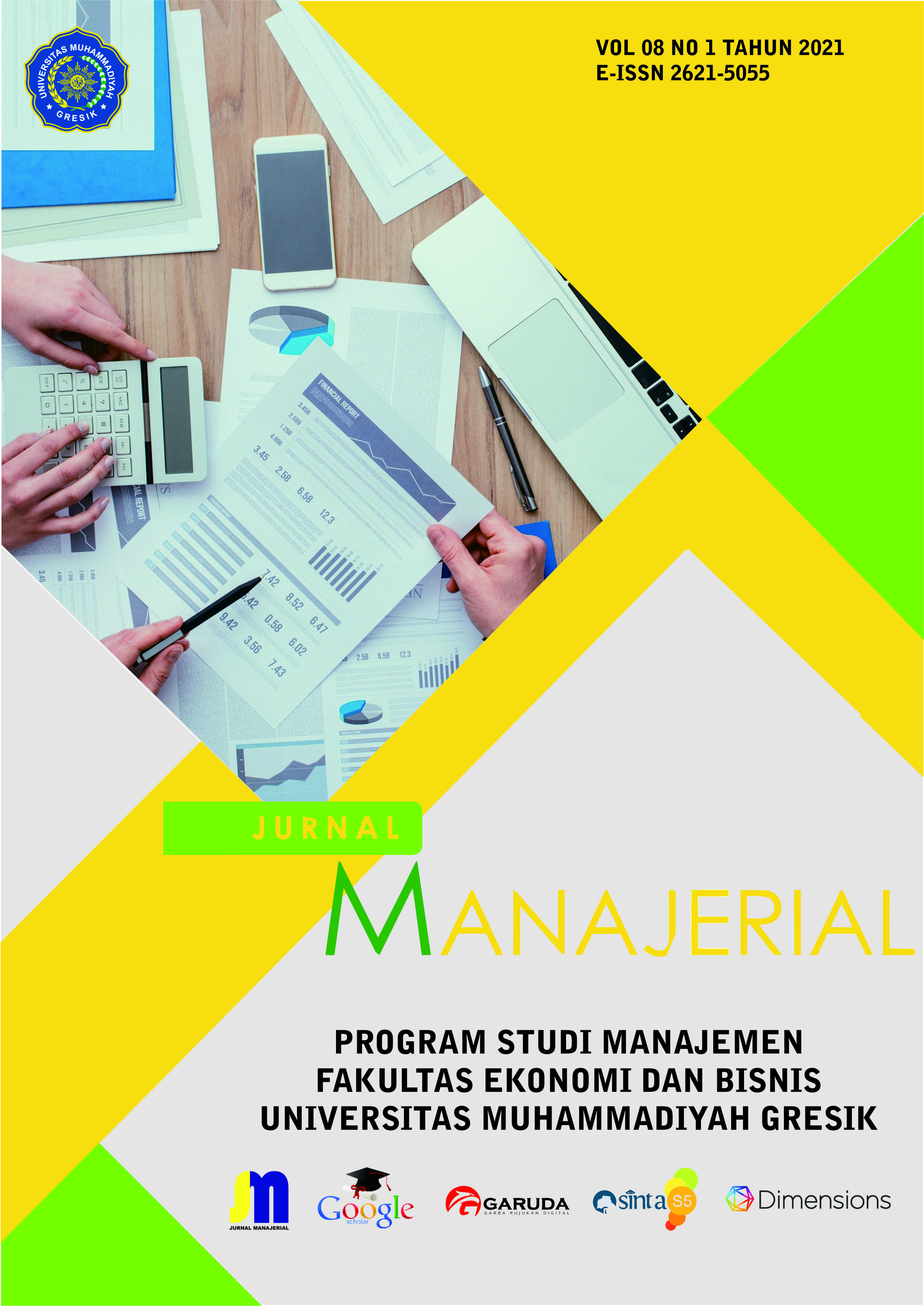Faktor-Faktor Yang Mempengaruhi Perilaku Word Of Mouth Intention Pelanggan PadaTempat Makan Masakan Khas Jawa Di Surabaya
DOI:
https://doi.org/10.30587/jurnalmanajerial.v8i01.1858Keywords:
Satisfaction, Trust, Commitment, Word Of Mouth, IntentionsAbstract
Background – The restaurant industry is a very competitive industry to attract and retain consumers. Restaurant owners need to understand how consumers want, need and perceptions. Word of mouth (WOM) has an important role in any effective marketing strategy for the restaurant industry. Purpose – This study aims to determine the influence of food quality, the quality of personal interaction, the quality of the physical environment, the perceived value, and the quality of the relationship (satisfaction, trust, and commitment) on the behavior of mouth-to-mouth intention of customers where to eat Javanese specialties in Surabaya. Design / Methodology / Approach – This study uses a sample of 200 respondents. The data processing method used in this research is Structural Equation Modeling (SEM) with LISREL 8.8 for Window software. The target population in this study is all people who have eaten and drank in one of the 10 places to eat Javanese specialties in Surabaya. The type of sampling in this study is accidental sampling or convenience sampling. Result and Discussion – Food quality, physical environment, personal interactional quality, perceived value have a significant positive effect on satisfaction. Satisfaction has a significant positive effect on Word of Mouth and trust. Satisfaction does not have an impact on the customer commitment to eating Javanese specialties in Surabaya. Trust has a significant positive effect on the customers' commitment to eating Javanese specialties in Surabaya. Trust and commitment have no influence on the word of mouth intention of customers to eat Javanese specialties in Surabaya. Conclusion – The results of the study found that customers of Javanese cuisine in Surabaya rated satisfaction as not the main assessment in forming a commitment to return to enjoy the food served. Business actors need to find and develop new things from other aspects such as beautifying interior and exterior buildings or increasing the variety of food and improving services and small things such as cleanliness. In the restaurant business, it is necessary to develop more value which is not owned by competitors. This makes it difficult for customers to find other alternatives. Researh Limitations – In this study, it was found that the Commitment variable alone was not sufficient in measuring the relationship between commitment and word of mouth intention, researchers needed to measure the commitment variable into three parts, namely affective commitment, calculative commitment and normative commitment. By measuring the commitment dimension, further research is expected to see how the results of the impact of the commitment dimension on word of mouth intention in the service industry.
References
Erciş, A., Ünal, S., Candan, F. B., & Yıldırım, H. (2012). The Effect of Brand Satisfaction, Trust and Brand Commitment on Loyalty and Repurchase Intentions. Procedia - Social and Behavioral Sciences, 58, 1395–1404.
Fang, Yu-Hui, Chao-Min Chiu dan Eric T.G. Wang. 2011. Understanding CustomersSatisfaction and Repurchase Intentions. Journal of Internet Research, 21 (4), pp. 479-503.
Hair, J.F., et al. (2010). Multivariate Data Analysis. (7th edition). New Jersey : Pearson Education Inc.
Jackie L.M. Tam (2004): Customer Satisfaction, Service Quality and Perceived Value: An Integrative Model, Journal of Marketing Management, 20:7-8, 897-917
Jalilvand, M. R., Salimipour, S., Elyasi, M., & Mohammadi, M. (2017). Factors influencing word of mouth behaviour in the restaurant industry. Marketing Intelligence & Planning, 35(1), 81–110.
Moorman, C., Deshpande´, R. and Zaltman, G. (1992), Relationship Between Providers and Users of Market Research: The Role of Personal Trust, Marketing Science Institute, Cambridge, MA.
Namin, A. (2017). Revisiting customers’ perception of service quality in fast food restaurants. Journal of Retailing and Consumer Services, 34, 70–81.
Ribbink, D., Van Riel, A.C.R., Liljander, V. & Streukens, S. (2004). “Comfort your online customer: quality, trust and loyalty on the internet”. Managing Service Quality, 14.
Ryu, K. and Han, H. (2010), “Influence of the quality of food, service, and physical environment on customer satisfaction in quick-casual restaurants: moderating role of perceived price”, Journal of Hospitality & Tourism Research, Vol. 34 No. 3.
Sahagun, M. A., & Vasquez-Parraga, A. Z. (2014). Can fast-food consumers be loyal customers, if so how? Theory, method and findings. Journal of Retailing and Consumer Services, 21(2), 168–174.
Sik Sumaedi, Rosa P Juniarti, I Gede Mahatma Yuda Bakti , (2015),"Understanding trust & commitment of individual saving customers in Islamic banking", Journal of Islamic Marketing, Vol. 6 Iss 3 pp. 406 – 428
Wijanto, Setyo H., Structural Equation Modeling. Yogyakarta: Graha Ilmu. 2008.
Wirtz Jochen And Chew Patricia Yp, 2002, “The Effect Of Oncentives, Deal Pronesss, Satisfaction And Tie Strenght On Word Of Mouth Behavior”, international journal of service industry management, Vol. 13 No. 2, pp.141-162






























 P-ISSN: 2354-8592 __ E-ISSN: 2621-5055
P-ISSN: 2354-8592 __ E-ISSN: 2621-5055 
